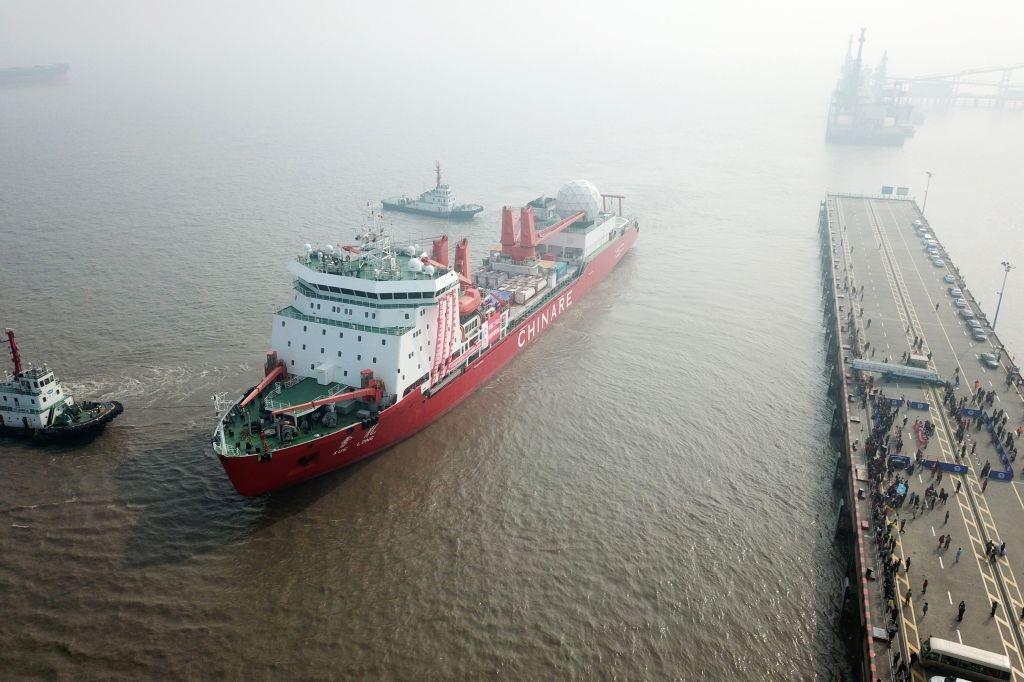China: Beijing’s Arctic Power Grab
Authored by Lawrence Franklin via The Gatestone Institute,
One important element of the $738 billion National Defense Authorization Act for the Fiscal Year 2020, which US President Donald Trump signed into law in mid-December, is the directive to examine and monitor “Chinese military activities in the Arctic, as well as Chinese foreign direct investment in the Arctic.”
The administration in Washington is right to be concerned about China’s increasing interest in the northern polar region. Two years ago, Beijing published a White Paper outlining its Arctic policy, which includes creating a “Polar Silk Road.” If fully implemented, this policy will challenge the United States and Russia for primacy in the region, where beneath the glaciers lie vast quantities of coal and natural gas.
Two Chinese polar icebreaking research vessels, Xuelong and Xuelong II, are presently carrying out the regime’s 36th scientific expedition in the waters off Antarctica. The crews of these vessels will help complete China’s fifth Antarctic scientific station for the gathering of data and establishment of under-the-ice submarine deployments similar to those operated by Washington and Moscow.
China’s Dailan Naval Academy supports an aggressive strategy for both the northern and southern polar seas. China’s Ministry of Defense and State Council continue to publish papers expressing a desire to pursue a robust maritime program, including a “Freedom of Navigation” mission in the Bering Sea, slated for some time in 2020.
Beijing’s polar strategy is linked to the prospect of finding deposits of “rare earth materials,” such as praseodymium, yttrium, and lanthanum, which are used in lasers, magnets, semiconductors, specialty glass, ceramics and nuclear batteries.
China already controls the mining and extraction of most of the world’s rare earth materials — all crucial for the global economy — and may be in talks with the Taliban in Afghanistan to obtain more: Afghanistan’s mountains are among a handful of places in the world where large deposits of these materials exist.
Unfortunately, the US is largely dependent upon China for these materials, which also lie beneath the huge ice masses of Greenland. This circumstance might well explain China’s vigorous effort to conclude major infrastructure contracts with Greenland’s government. Beijing is proposing to build several airports, harbors, roads and railways in Greenland, which would facilitate the transport of rare earth materials — once they are excavated — to China.
Beijing-administered airports in Greenland, however, could pose a strategic threat to America’s ally, Canada. Also at risk under such a scenario would be the US military facility in Thule, Greenland, which serves as an early-warning node for a nuclear attack on the North American continent. To counter this potential threat, the Trump administration and fellow NATO member state, Denmark — which owns Greenland — have preempted China’s plans by agreeing to finance the proposed airports. But China’s drive for eventual primacy in the Arctic region also extends to the Danish-owned, self-governing network of the 18 Faroe Islands, located midway between Norway and Iceland in the North Atlantic Ocean.
The US and China currently are competing for influence in the Faroe Islands, with Beijing offering to increase the importation of fish on condition that the islanders agree to utilize China’s wireless network system with fifth-generation technology (5G) administered by Huawei, and Washington attempting to block the use of Huawei networking equipment on the islands due to the company’s intelligence-gathering cooperation with the Chinese regime.
Although China is a latecomer to great-power competition in the Arctic, its Arctic profile could rise quickly if Moscow pools its efforts with Beijing. The Russian Air Force has long had a separate branch for polar aviation, and Russia maintains an extensive nuclear- and diesel-powered fleet of icebreakers. China’s friendly relations with Russia could lead to a powerful polar alliance.
In July 2017, Chinese President Xi Jinping and Russian President Vladimir Putin signed a “Joint Declaration on Further Strengthening Comprehensive, Strategic and Cooperative Partnership,” which included plans to cooperate on projects along Russia’s Northern Sea Route. No other nation has invested more energy, accumulated lessons-learned or extracted more resources in the environmentally challenging polar conditions than Russia.
If Moscow works in tandem with Beijing, China could emerge quickly as a potent competitor for influence in the Arctic. Let us hope that Washington is able to prevent this from happening.
Tyler Durden
Fri, 01/10/2020 – 02:00
via ZeroHedge News https://ift.tt/35Kx84V Tyler Durden
